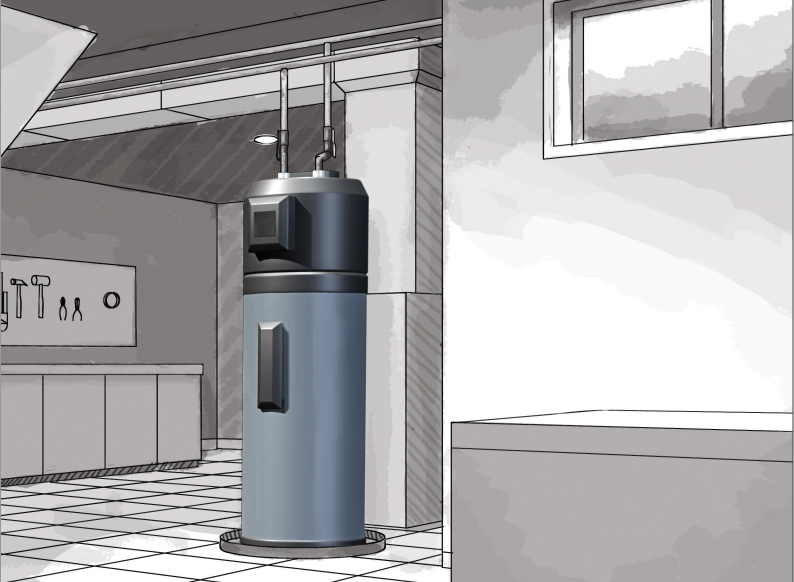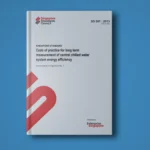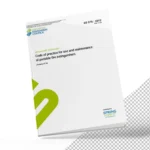Water Heater Capacity Calculations is essential to ensure that it meets the hot water demand of a household or facility without being oversized or undersized. Here’s a detailed guide on how to perform heater capacity calculations:
Key Factors to Consider
- Number of Occupants: More occupants typically mean higher hot water demand.
- Hot Water Usage: Consider peak usage times, such as mornings or evenings when hot water demand is highest.
- Type of Water Heater: Different types of heaters (tank, tankless, heat pump, solar) have different efficiency and recovery rates.
- Temperature Rise: The difference between the incoming cold water temperature and the desired hot water temperature.
- Flow Rate: The rate at which is used, typically measured in gallons per minute (GPM) or liters per minute (LPM).
Water Heater Capacity Calculations Methods
1. Tank Water Heater Sizing
Tank heaters are sized based on the peak hour demand – the highest usage during a single hour of the day.
Steps:
- Determine Peak Hour Demand: Estimate the total hot water usage during the peak hour.
Typical Hot Water Usage:
| Activity | Gallons of Hot Water Used |
|---|---|
| Shower (per person) | 10 |
| Bath | 20 |
| Hand Washing (per use) | 2 |
| Shaving (per use) | 2 |
| Dishwashing by hand (per use) | 4 |
| Dishwasher (per load) | 6 |
| Laundry (per load) | 25 |
- Calculate Total Peak Hour Demand: Sum the hot water usage for all activities that occur during the peak hour.
Example Calculation:
- Number of Occupants: 4
- Morning Peak Hour Activities:
- 2 showers: 2 * 10 = 20 gallons
- Hand washing: 4 uses * 2 = 8 gallons
- Dishwasher: 6 gallons
- Laundry: 25 gallons
Total Peak Hour Demand: 20+8+6+25=59 gallons20+8+6+25=59 gallons
Choosing the Tank Size: Select a heater with a first-hour rating (FHR) that meets or exceeds the total peak hour demand. In this example, a heater with a 60-gallon FHR would be appropriate.
2. Tankless Water Heater Sizing

Tankless heaters are sized based on the flow rate required and the temperature rise.
Steps:
- Determine Flow Rate: Sum the flow rates of all fixtures that could be used simultaneously.
Typical Flow Rates:
| Fixture | Flow Rate (GPM) |
|---|---|
| Shower | 2.5 |
| Faucet | 1.0 |
| Dishwasher | 1.5 |
| Washing Machine | 2.0 |
- Calculate Total Flow Rate: Sum the flow rates of all fixtures used simultaneously.
Example Calculation:
- Shower: 2.5 GPM
- Faucet: 1.0 GPM
- Washing Machine: 2.0 GPM
Total Flow Rate: 2.5+1.0+2.0=5.5 GPM2.5+1.0+2.0=5.5 GPM
- Determine Temperature Rise: The difference between the incoming water temperature and the desired output temperature.
Example:
- Incoming water temperature: 50°F
- Desired output temperature: 120°F
- Temperature rise: 120°F – 50°F = 70°F
- Select a Tankless Water Heater: Choose a tankless heater that can handle the total flow rate at the required temperature rise. Manufacturers provide charts to help select the right model.
Example Calculation for Excel
Here is how you can structure your Excel sheet for a tank water heater:
Excel Columns:
- Activity
- Gallons of Hot Water Used
- Number of Uses
- Total Gallons Used
Example Data and Formulas:
| Activity | Gallons of Hot Water Used | Number of Uses | Total Gallons Used |
|---|---|---|---|
| Shower (per person) | 10 | 2 | =B2*C2 |
| Hand Washing (per use) | 2 | 4 | =B3*C3 |
| Dishwasher (per load) | 6 | 1 | =B4*C4 |
| Laundry (per load) | 25 | 1 | =B5*C5 |
| Total Peak Hour Demand | =SUM(D2) |
Conclusion
Water Heater Capacity Calculations involves calculating the peak hot water demand during the busiest hour of usage. By using the provided formulas and Excel template, you can ensure that your water heater is adequately sized to meet your needs without wasting energy or water. For tankless water heaters, focus on the flow rate and temperature rise to select the appropriate model.
Note: All Password are [“salaimep” or “salaimep.com”]
Water Heater Capacity Calculations Software can be download below.
Download |OneDrive, Google Drive
Also Download – Rainwater and stormwater calculations Software Free Download









